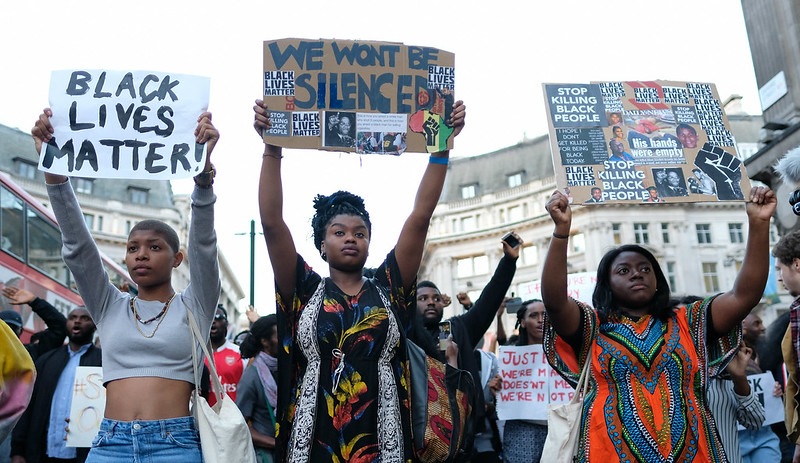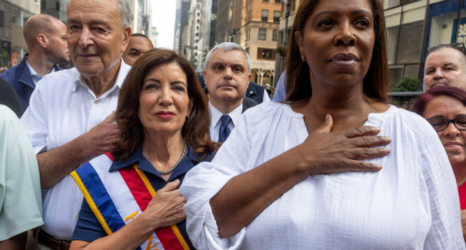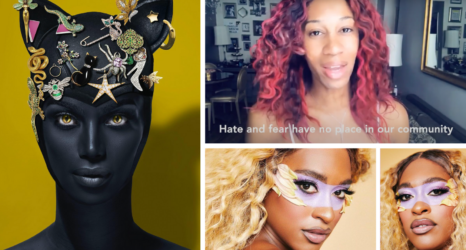At the same moment white parents and elected officials decry teaching the history of racism, its harmful effects are playing out in classrooms and hallways in schools across the nation.

When I first saw a headline reporting the death of a 10-year-old girl by suicide late last year, my heart sunk. I couldn’t bring myself to read the full article. As I scrolled through my Twitter timeline a few hours after seeing that headline, I came across a picture of the girl: Isabella Faith Tichenor.
Her cornrows and colorful beads on the ends of her braids were intimately familiar. I remember the joy I experienced the first time I recall getting beads in my hair. They made me feel beautiful and joyous—a sight to be seen and heard. Images of Black girls from across the African diaspora with hair decor never cease to make smile. In a world seemingly hellbent on seeing Black girls as too loud, hair beads still feel like a sartorial defiance of a demand for us to be quiet and unseen. One of the many reasons I loved Venus and Serena Williams when they first took the tennis world by storm was because of their beads. These game-changing phenoms were unabashedly Black and girl.
The image of Isabella with her beaded hair, however, gutted me. I knew that there was nothing beautiful or joyous about the story I had yet to read.
I braced myself as I prepared to read details about how bullying, anti-Black racism and ableism led to her untimely death. To be honest, I didn’t want to read and bear witness to yet another story about a school failing to be a nurturing space for Black girls. I know all too well how violent and sometimes even death-dealing schools can be for Black girls like Isabella. In this particular story, nevertheless, it wasn’t harsher discipline via suspensions and expulsions or physical assaults by school resources officers disproportionately experienced by Black girls, it was a culture of bullying perpetuated by students and teachers in a predominantly white school in Utah.
Isabella Faith Tichenor’s cornrows and colorful beads on the ends of her braids were intimately familiar. The image, however, gutted me. I knew that there was nothing beautiful or joyous about the story I had yet to read.
The discussion of bullying in schools too often leaves out the unique impact it has on Black girls. The first “mainstream” representation I recollect seeing was that of a 14-year-old Black girl featured in the 2011 critically acclaimed documentary, Bully. Her name is Ja’Meya Jackson. Nearly a decade ago, I sat in an auditorium at University of Missouri to watch Bully at the annual True/False Film Festival. I knew the film would be infuriating and heartbreaking, but I felt compelled to sit with the painful realities it aimed to expose.
As I watched and listened to kids describing how they were tormented by their peers and ignored by those charged with caring for and protecting them at school, Ja’Meya’s journey hit me like a ton of bricks. After being relentlessly targeted by her peers on her hour-long bus rides to and from school, she eventually brandished a loaded gun in an effort to scare her bullies.
Despite overwhelming evidence of her being repeatedly victimized, it’s Ja’Meya who was charged as an adult with multiple felonies and ultimately incarcerated in a juvenile detention facility. Her pain and anguish were illegible to those who could’ve supported her before she reached her breaking point. She was punished and devalued by a criminal legal system that could not fathom her desperation or pain. Although released into the loving embrace of her mother over the course of the filming of the documentary, Ja’Meya suffered through so much before attaining any semblance of relief.
Ja’Meya Jackson was punished and devalued by a criminal legal system that could not fathom her desperation or pain.
I thought of Ja’Meya as I read about Isabella. While Ja’Meya survived being tormented and criminalized for being bullied, Isabella reached a breaking point at which she no longer wanted to be alive. The racist and ableist harassment became too much.
For years prior to Isabella’s death, school officials in the Davis School District in Utah where she was a student ignored “serious and widespread” racist harassment against Black and Asian students. The environment was so hostile for racially minoritized students that the U.S. Department of Justice stepped in to investigate what was happening and how and why school officials took no steps towards addressing a culture of abuse.
Isabella suffered verbal and physical attacks at school for months with no reprieve or protection. Her mother reported the abuse to school and district officials. Nothing happened. Neither the school or the Davis School District did anything to protect Isabella or to intently hold her bullies accountable. The school and the district fostered a violent culture in which Isabella’s cries and her mother’s agony were summarily ignored. At a young age, Isabella learned just how cruel this world can be to Black girls, especially those with disabilities.
A vigil for 10-year-old Isabella Faith Tichenor was held Tuesday night.
— KSL NewsRadio (@kslnewsradio) November 10, 2021
Photo credit: Jay Hancock pic.twitter.com/ffivzn2tvU
Her loved ones called her Izzy. Their love and care for her, however could not stop the terrorizing she encountered day after day. For Isabella, the convergence of anti-Black racism and ableism proved fatal. And while officially, the cause of death was suicide, the Davis School District was in the very least an accomplice to her tragic end.
The refusal to see what is happening in our schools as endemic comes into sharper focus when the story of a 10-year-old-child dying by suicide surfaces. At the same moment in which primarily white parents as well as elected and appointed officials decry the teaching of histories about race and racism, the reality of racism and its harmful effects are playing out in our classrooms and hallways in schools across the nation. While Isabella’s story is one of the worst outcomes possible when we don’t get honest about the gravity of anti-Black racism and ableism in the lives of children, her story is sadly of one of many as it pertains racist and ableist bullying.
When the question of “how young is too young to teach kids about race” is raised, it would serve us well to start with the experiences of racially minoritized youth as the foundation. By the age of 10, Isabella’s peers had already learned enough about race, racism and ableism to harass and assault her. The stakes are higher for some of us and to ignore that is to have blood on your hands too.
Up next:





